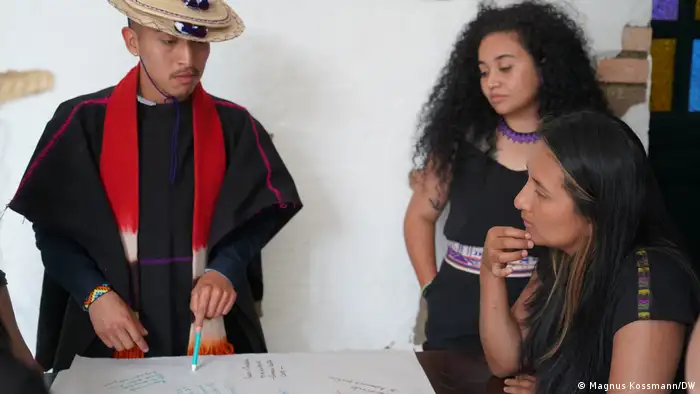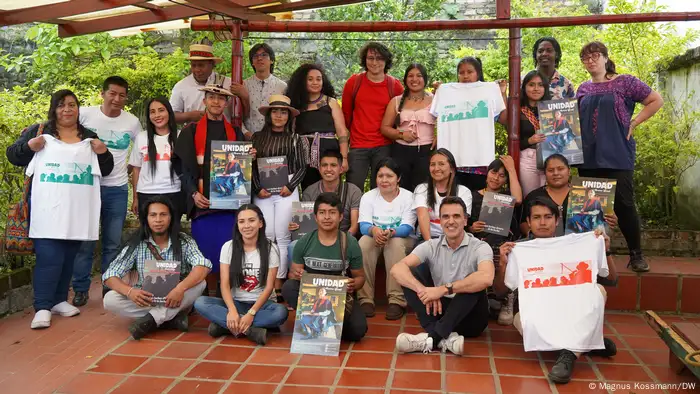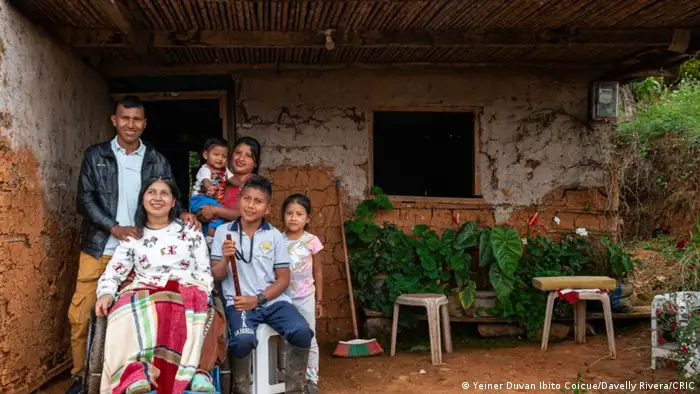Latin America
CRIC: "It is important that our reality and our everyday life are represented."
Natalia Fernández Hormiga works in communications for the oldest indigenous organization in Latin America. She shares the successes and the challenges of communicating from southwestern Colombia.
In the Yanacona indigenous reservation of Rioblanco, in the southern Colombian department of Cauca, many people have to emigrate, because of armed conflict and due to a lack of access to education or work. "The lack of access to education is part of the violence in the country," says Natalia Fernández Hormiga.
For work reasons, Fernández Hormiga's mother had to leave her resguardo and move to Popayán, the departmental capital. It was there where, years later, Fernández Hormiga was able to study graphic design at the University of Cauca and to learn to develop her political perspective through visuals and graphic design. Her focus: to "communicate from the south, to communicate about what we are." And now, she puts it into practice as part of the Regional Indigenous Council of Cauca’s (CRIC) communications team.
CRIC, Latin America’s oldest indigenous organization, includes 11 indigenous communities. The movement advocates for indigenous rights and worldview through education and communication initiatives. Together with DW Akademie, the CRIC has published seven issues of the Revista Unidad Álvaro Ulcué and a collection of selected texts as a book.
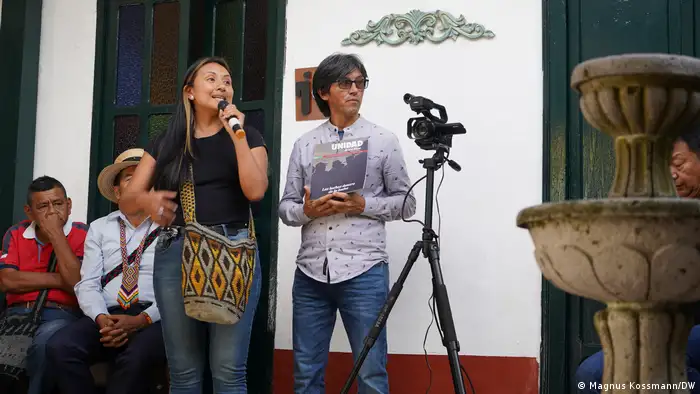
Fernández Hormiga participated in the presentation of the 7th issue of the Alvaro Ulcué Unity Magazine in the city of Popayán
DW Akademie: What are the CRIC’s communication program objectives and, in particular, of this magazine?
Natalia Fernández Hormiga: We see in ads and movies that all people are white or have physical features different than our own, and their houses and cities are different from ours. It is important that in all these scenarios, our reality and our everyday life are represented. That is why we focus on showing who we are and what we are producing from the territory.
The Unidad Álvaro Ulcué magazine was formed, with the support of DW Akademie, to conduct research on topics related to what we as indigenous people are experiencing. Two years ago, in addition to professional communicators, we included indigenous residents in the production. This openness allowed us to link new perspectives and topics, encourage participation and improve communication in our territory.
After seven editions, we decided to compile a book that gathers 15 of the texts previously published. We want to show how we have been building ourselves and how we are making history every time we sit down to write and tell the reality of our lives.
In fact, what is the reality of women communicators in the department of Cauca like?
There are fewer women communicators than male colleagues working in this field; there is a lack of participation. In addition, perspectives on gender have not yet been integrated into the community’s communication process and there is still a lack of commitment to communicate from our perspective. This is because we have to get more involved, but also because our colleagues do not see it as important, for now.
The reality is complex, moreover, because Cauca is a department still plagued by several conflicts: the armed conflict, illicit crops, land disputes. All this generates an insecure panorama for all those who work in communication. For women, the situation is worse, because we are given the role of victims, a perspective that infantilizes these women who are a part of the communication processes and makes us feel weak and incapable.
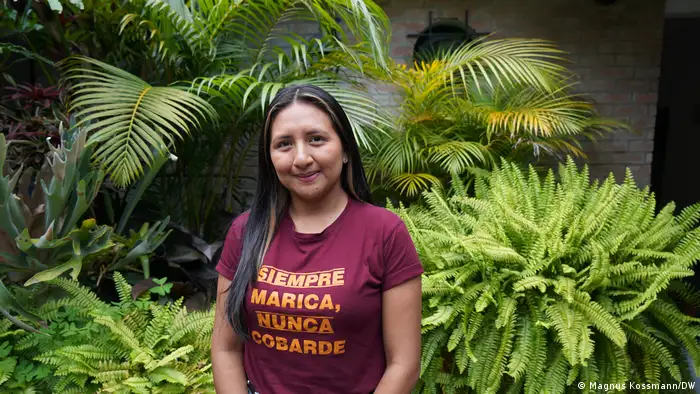
Through communication, Fernandez advocates for gender equality and respect for sexual diversity, among others.
The seventh issue of the magazine addresses complex issues such as sexual diversity, racial integration and disability. How does CRIC deal with these issues?
The emergency agenda, marked by armed conflicts or the violation of our rights, for example, hides other important issues for our process. This last issue focuses on some of these issues, such as sexual diversity. Indigenous people in the territories recognize themselves with sexual or gender identities different from those commonly recognized and established, and it is necessary to talk about the confrontation between indigenous values and worldviews. Discussions about bisexuality, transsexuality or homosexuality are also colored by the history of colonialism. The voice of the elders is very important for us, but the debate is taking place and we want to contribute through the magazine.
In that sense, DW Akademie's support has been important because, beyond funding, this respectful peer relationship has motivated us to tell our story with our voices.
Now, after nine years, the project between the CRIC and DW Akademie is coming to an end. What plans do you have to continue encouraging intercultural and inclusive communication from the CRIC?
We are working on the last magazine issue’s evaluation to see what has worked best and, at the same time, we have begun a participatory process to determine what the next topics will be. We want to think about how we see ourselves in the future and continue to raise issues for debate that will allow us to advance and improve as indigenous peoples.
A cycle is ending for the magazine with DW Akademie, but we want to keep it going because we saw the interest it generates. We are going to set aside specific funds for it and will start asking for a small stipend in return to cover expenses. We also want to generate commercial spaces within the magazine for indigenous peoples' own economic initiatives. Beyond funding, the most important thing is that the communities want to continue reading the magazine and contribute by writing for it. As long as these two points are maintained, we will move forward.
The Regional Indigenous Council of Cauca (CRIC) was a strategic partner of DW Akademie from 2014 to 2022. Within the framework of this alliance, the editorial process of the journal Unidad Álvaro Ulcué has been consolidated and has reached its seventh issue with total editorial freedom. Beyond the production of the journal, the creation of each issue has been a training process that involves engaging the territories it represents, collective editing processes and the inclusion of new creators of written and audiovisual content.
This project was supported by the German Federal Ministry for Cooperation and Development (BMZ).
DW recommends
- Date 17.05.2023
- Feedback: Send us your feedback.
- Print Print this page
- Permalink https://p.dw.com/p/4RVUI
- Date 17.05.2023
- Send us your feedback.
- Print Print this page
- Permalink https://p.dw.com/p/4RVUI

